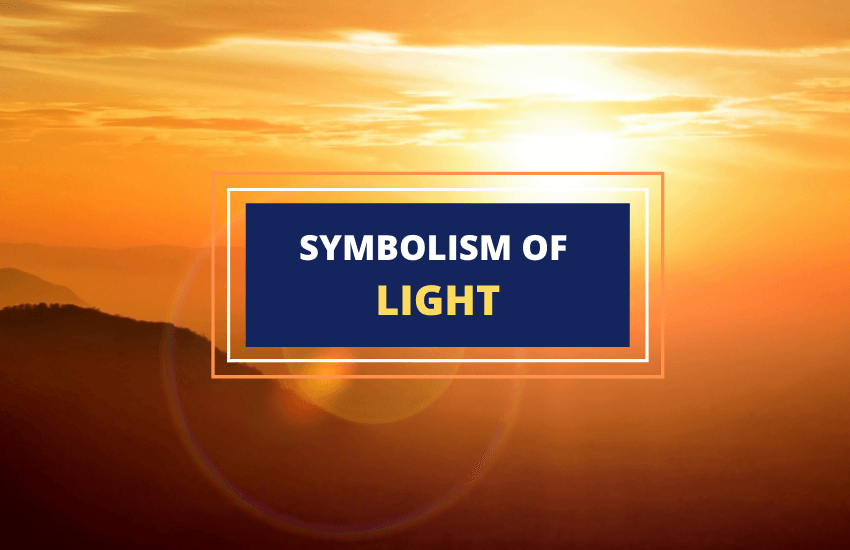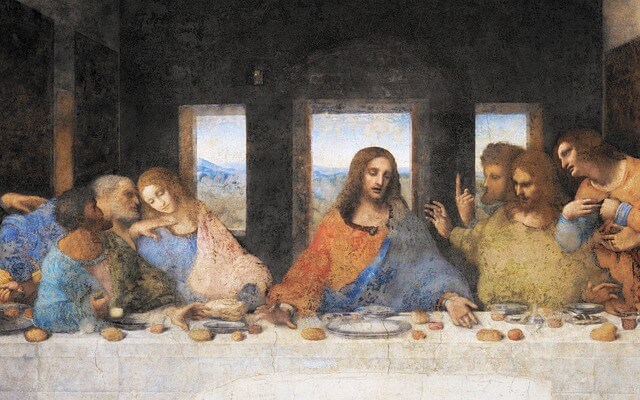
Table of Contents
Have you attempted to make your way around a pitch-dark room? What relief light brings! Literally and figuratively, light is the opposite of darkness. Throughout history, it has been used as a metaphorical symbol across world religions, traditions, and societies. Here’s what to know about the symbolism of light and its significance in different cultures.
Meaning of the Symbol of Light

Light has been used to represent different ideas and concepts in life, philosophy, and spirituality. Metaphors relating to light abound in the English language, signifying the symbolic meanings of the concept. Here are some of these meanings.
- Symbol of Guidance
Light is strongly associated with our ability to make right decisions, contrary to darkness, which is the state of being lost, or on the wrong path in life. In many philosophical teachings, a lost soul will often follow a path of light for guidance. You may have experienced a situation that can be likened to darkness, but you eventually saw it in a new light and gained a better perspective on it.
- Symbol of Life
Many people look to the light of the rising sun for its life-giving energy. The expression it’s good for the eyes to see the sun may also mean it’s good to be alive. In religious contexts, light is associated with creation, as God created light before anything else. All life on earth is also dependent on light.
- Symbol of Hope
Light has been regarded as an emblem of hope and an assurance of brighter days to come. We often hear the saying, light at the end of the tunnel, which serves as hope for people dealing with hardships and challenges. When the sun, moon, and stars do not give their light, it signifies calamity.
- Morality and Virtues
When referring to someone with good morals, you’ll often hear reference to their inner light. The symbolism of light is often contrasted with the connotation of darkness, where light is symbolic of good, while darkness as a representation of evil.
- A Symbol of Truth
To shed light on something means to reveal the truth. Light will be visible during darkness, associating it with the motto the truth prevails. It also allows for openness and transparency, but when someone hides something, everyone else is in the dark.
- Joy and Happiness
As the opposite of gloom, light may denote cheerfulness, optimism, and happiness. Thousands of candles can be lighted from a single candle, just like happiness that never decreases by being shared. For some, light is also a symbol of progress and excitement for the future.
- Spiritual Enlightenment
Light is often associated with wisdom, as the term enlightenment means understanding of spiritual knowledge. For some, it’s the symbol of spiritual strength, as it’s the opposite of ignorance and spiritual darkness.
- The Embodiment of Divinity
In religious artwork and paintings, the concept of light suggests the presence of a divine being. It’s mostly associated with spirits and angels as beings of light. In Hinduism and Buddhism, angelic beings are regarded as minor gods called devas, which means shining ones. Also, it’s widely believed that apparitions and other miraculous events often feature light in mysterious ways.
The Symbol of Light in History
When used in art, light serves as a visual language for interpreting a scene. The symbolic sense of light is also evident in architecture and in literary classics.
In the Arts

In the 15th century, light was used as a form and symbol in some paintings. By shining a light on certain elements in a painting, a story is constructed. Leonardo da Vinci was the first to study the nature of light, in order to create shapes and perspectives in paintings—evident in his The Last Supper. In fact, this masterpiece represents a lifetime of scholarly pursuits in the fields of optics and light.
By the 17th century, light began to be used as a subject and symbol in paintings. In Willem Claesz Heda’s Banquet Piece with Mince Pie, the candle in the scene has been blown out, which many associate with the transience of worldly existence, or even the abruptness with which life can end.
Dutch painter Jan Vermeer made light a part of his paintings, especially in the Woman with a Pearl Necklace.
In Architecture
The symbolism of light as the embodiment of divinity has played a huge role in structures of gothic cathedrals. The Gothic style originated in 12th-century CE France pioneered by Abbot Suger. He renovated the Basilica of Saint-Denis, the first-ever gothic cathedral, with the intentional use of light.
Suger believed that a brighter church would also brighten the minds of the people, so he eliminated any obstruction to the flow of light throughout Saint-Denis. Eventually, his intentional use of light in the gothic cathedral became an architectural technique itself.
In Literature
In the 1818 novel Frankenstein, light serves as a symbol of knowledge and enlightenment, but it’s contrasted with fire, which represents harm. In the story, Victor Frankenstein’s knowledge led to creation, but the monster he brought to life killed everyone he loved.
In the novel and film The Great Gatsby, the green light symbolizes Jay Gatsby’s American dream and his quest for Daisy. However, it’s also symbolic of money and greed. Even though the story is set in the Jazz Age, the symbolism of the green light remains relevant in our modern society.
Usually, the symbolism of light is used in conjunction with darkness, where light represents life or hope, while darkness represents death or the unknown. In some instances, the candles, the sun, the moon, and stars are used as embodiment of light.
The Symbol of Light in Different Cultures and Beliefs
A significant amount of symbolism is associated with light in cultures around the world. In several mythologies and beliefs, it’s represented by the sun, gods and goddesses.
In Ancient Sun Worship
Throughout history, the Sun has been the embodiment of light and warmth. Ancient civilizations had sun cults, and the most elaborate were those of Egypt, Central America, and Peru. In ancient Egypt, Khepri was worshipped as the god of the rising sun, while the sun god Ra was the mightiest of all. In Aztec religion, human sacrifice was demanded by sun gods Tezcatlipoca and Huitzilopochtli.
As the source of light, the sun has been associated with enlightenment. It’s not surprising that solar worship was prominent in the ancient times, as the sun also enables all things to thrive and grow. In some cultures, it also occupied an important place in mythologies. The ancient Greeks worshipped Apollo, the god of the sun, while Dagr was regarded as the Nordic god of the light.
In Astronomy and Astrology
The early astronomers regarded the sun, the moon, and the stars as lights in the sky, shining like beacons in the dark. They even associated them with the divine influence and supernatural forces. No wonder, they also named the planets after the gods of Ancient Rome—Mercury, Venus, Mars, Jupiter and Saturn. Nowadays, many still believe that these celestial bodies have connection with people, and can influence a particular day of the week.
In Mysticism and Divination
In esoteric teaching, the white light is the space within the universe that houses positive energies. It’s thought to be called upon by anyone for protection and healing. Mystics, prophets, and sages are even called lights.
In divination, the crystal ball is symbolic of the divine light and celestial power. It’s believed to concentrate the light or rays of the sun, so the diviner gazes into the crystal to receive the flashes of insights from the future or the past.
In Jewish Culture
In Jewish tradition, light has been used as a powerful spiritual metaphor and enduring symbol for God. It serves as a symbol for the human soul, Torah, and mitzvot, which are the commandments and laws in their sacred texts. The light and burning candles of the menorah also remind them of God’s presence in their lives.
The Symbol of Light in Modern Times

Several holidays use the symbolism of light as a marking in celebrations. One of the major festivals in Hinduism, Sikhism, and Jainism, the Diwali or the Festival of Lights is celebrated with lamps, lanterns and fireworks. The name is derived from the Sanskrit word dipavali that means row of lights, as people light up their earthen oil lamps, or diyas, during the festival.
Diwali represents the victory of light over darkness. By lighting their lamps, the Hindus welcome Lakshmi, the goddess of wealth and purity, to bless their homes. Some also regard the festival as the birthday of the goddess, as well as a celebration of her marriage to Vishnu. For the Jains, it commemorates the enlightenment of Mahavira, the reformer of Jainism and the last of the 24 Tirthankaras.
During Hanukkah, a Jewish Festival of Lights or Feast of Dedication, families light the menorah and say prayers. It’s often celebrated between late November and early December, which corresponds to the 25th of the Jewish month of Kislev. The holiday reaffirms the ideals of Judaism and reminisces the rededication of the Second Temple of Jerusalem.
Beltane, an ancient Celtic festival observed on May Day, celebrates light and the coming of summer. The term is derived from the name of Celtic sun god Bel, which also means bright fire. Throughout Europe, it’s celebrated by cutting of green boughs and flowers, and Maypole dances.
In Brief
One of the oldest and most meaningful symbols, light has special significance in almost every culture and religion. As a symbol of life, hope, guidance and truth, it has inspired several works of art and gothic architecture. In many cultures, festivals of light commemorating the victory of light over darkness are celebrated.








